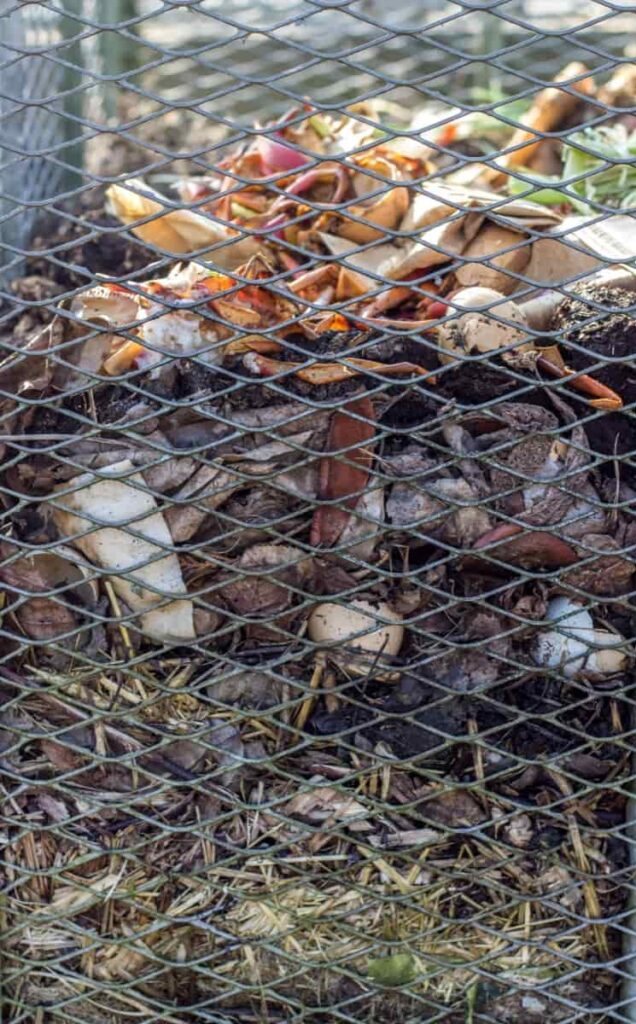Recycling is a process of transforming any waste into something new or valuable. It is common knowledge that waste generation at home cannot be prevented in most cases. Despite this, you should know that recycling waste is a possible process and can help protect the environment and the human population from negative effects caused by waste.
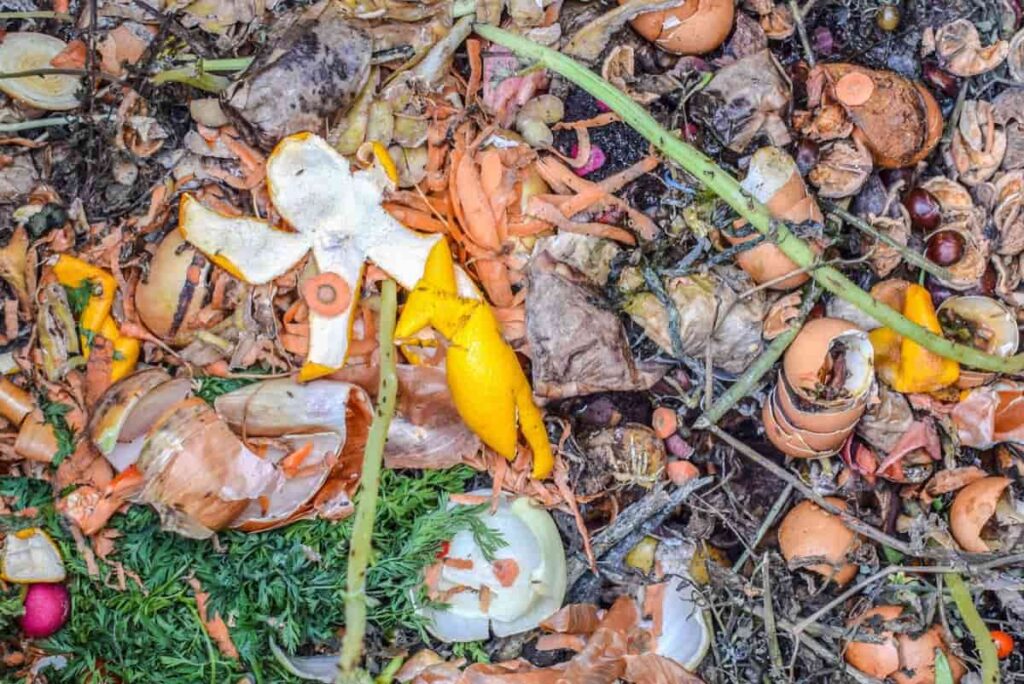
As well as recycling biodegradable waste, biodegradable composting waste can also be considered a form of recycling. You can then determine how much waste you can recycle at home and follow the recycling steps accordingly. Whenever you crack an egg for breakfast or to make baked goods, take care not to throw away the shells once you have cracked the egg.
As a gardener, you may find that eggshells are a good source of inexpensive fertilizer for your plants as long as you follow some basic steps. The advantage of using eggshells instead of synthetic fertilizers is that you don’t have to worry about overfertilizing. In the long run, the plant will not be able to get adequate nutrition from eggshells alone, so keep that in mind.
Homemade fertilizer recipe with egg shells
Why use eggshells
The eggshell consists almost entirely of calcium carbonate (CaCO3), a form of calcium that occurs in nature almost everywhere (think of seashells, coral reefs, and limestone) as it is the most common form of calcium. Furthermore, it is the widely available and cheapest form of calcium in supplements. Here we are, tossing it away. It is also important to note that eggshells contain small amounts of other minerals. According to the test results, it contained 4 mg of calcium, 4 mg of potassium, and very small amounts of magnesium, phosphorus, and sodium.
In case you missed it: Easy Homemade Fertilizer Recipes: Natural and Organic for Houseplants, Flowers, and Garden Plants
How to make water-soluble calcium eggshell fertilizer
Gather your materials and ingredients
You must save the shells of the eggs when making a meal or a recipe from them—plan on using 4 to 5 eggs per plant you wish to fertilize to achieve the best results. Besides white vinegar, you’ll also need rainwater, distilled water, or filtered water to water your plants. To store leftover eggshell powder, you will also need a small bowl, a measuring cup with a spout, a wide-mouth container with a lid, and a clean jug.
Rinse and dry the eggshells
Using cool running water, rinse the eggshells thoroughly under a stream of cool water. It is not necessary to scrub the shells or wash them with soap, and it is perfectly fine if there are still some egg white residues on the shells or if the membrane remains on them. The eggshells should be spread on a baking sheet and then placed in the oven at a high temperature.
You should dry the shells for about two hours in the oven. In addition to removing the moisture from the shells, this step will kill any bacteria lurking on the shell surface due to the drying process. The baking sheet should be removed from the oven and set aside to cool for a few minutes.
Crush and grind the eggshells
It is possible to crush them into flakes either by hand or with the help of a food processor. If you do not have a coffee grinder, you can use a pestle or a mortar to grind them into a powder. If you use eggshells in your soil, you can use them whole, but they will decompose much faster if crushed or ground into powder. It is recommended that you bake the eggshells at high temperatures in an oven until they begin to brown lightly before grinding them to make the crushing process easier.
Add the vinegar
The amount of eggshell powder you will need per gallon of water you will use to water your plants should be two tablespoons per gallon. As soon as the powder is placed in the small bowl, add an equal amount of white vinegar. A non-metal utensil like a wooden skewer or a mini spatula would best stir the eggshell powder and vinegar together. As the vinegar reacts with the eggshells, the mixture will bubble up as it reacts with the calcium in the vinegar. The mixture should be stirred continuously to ensure that the eggshell powder has absorbed all the vinegar.
In case you missed it: Liquid Fertilizer Guide for Plants: How to Apply, Homemade, Types, Vegetables, Herbs, Lawn, Potted Plants, and Indoors
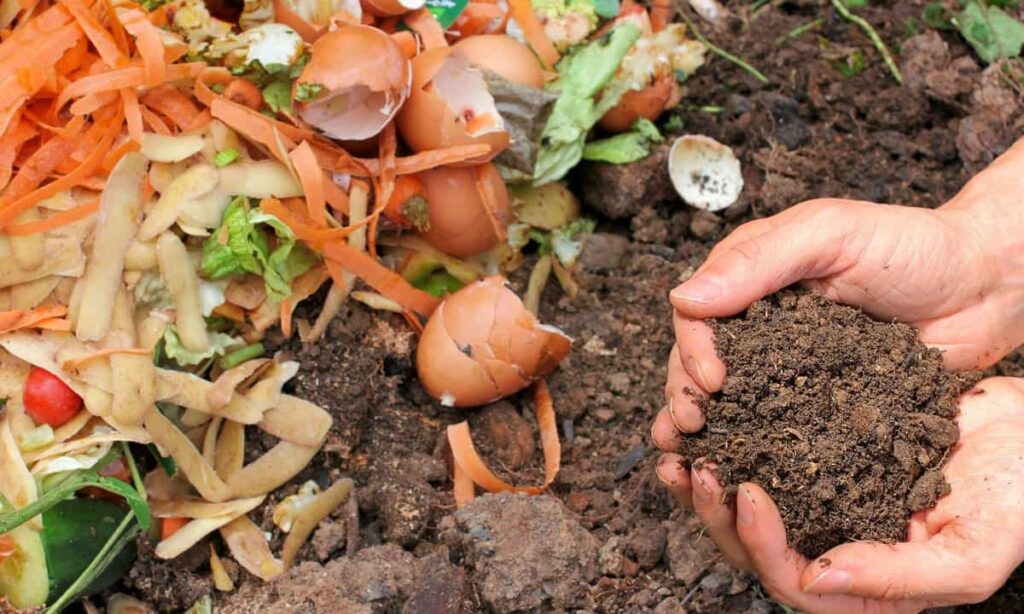
Mix the calcium solution with water
As soon as the vinegar has had ample time to react with the calcium, it is time to mix the solution with the water you have collected from your spring. Using a measuring cup, pour enough solution for one gallon of water into the cup, and then add a little bit of water to make the solution pourable – the mixture is a bit gritty at this point. It would be best if you shook the container well after you had put the lid on.
Water your plants with your eggshell fertilizer
It is time to water your plants with the eggshell fertilizer you have prepared. You can water your houseplants, garden vegetables, and flowerbeds with dissolved calcium, giving your plants a boost with the added calcium.
Save the extra shell powder to make more eggshell fertilizer
If you crushed more eggshells than needed, keep the extras in your lidded jar so you can use them later. The shells will keep for a much longer period if they are kept dry, and you can measure out the amount you need and mix it with vinegar if you need it. The jar should be placed in the refrigerator for several months to keep it fresh. In addition, you can sprinkle pulverized eggshells around the base of garden vegetables to deter slugs and snails from invading your garden.
How to make eggshell fertilizer tea
Calcium carbonate (CaCO3) is the main component of eggshells, while calcium phosphate and magnesium carbonate are also in small amounts. There is about 3% acetic acid present in white vinegar. Due to the reaction between the calcium carbonate and the acetic acid, water-soluble calcium, water, and carbon dioxide are left behind. When it comes to fertilizer, there is a common question that asks whether using vinegar will make eggshell fertilizer too acidic to use on your plants.
As a result of the reaction, the calcium in the eggshells can neutralize the pH of the vinegar as it occurs. Once the vinegar and eggshells have reacted, you can check the pH of the solution with a pH test strip (like the kind used for fish tanks). Water-soluble calcium eggshell fertilizer can be made immediately by converting insoluble calcium carbonate (calcium) into soluble calcium (calcium) using white vinegar.
Then you have to add the solution to the water you usually use to water your plants, and you are done. You can also make an eggshell fertilizer tea that you can use as a fertilizer in your garden. A gallon of water should be boiled, and 10 to 20 clean and dry eggshells should be added. The brew can be more potent by adding up to 20 egg shells.
In case you missed it: High-yield Hybrid Papaya Varieties in India: How to Grow, Fertilizers, Pests, and Diseases
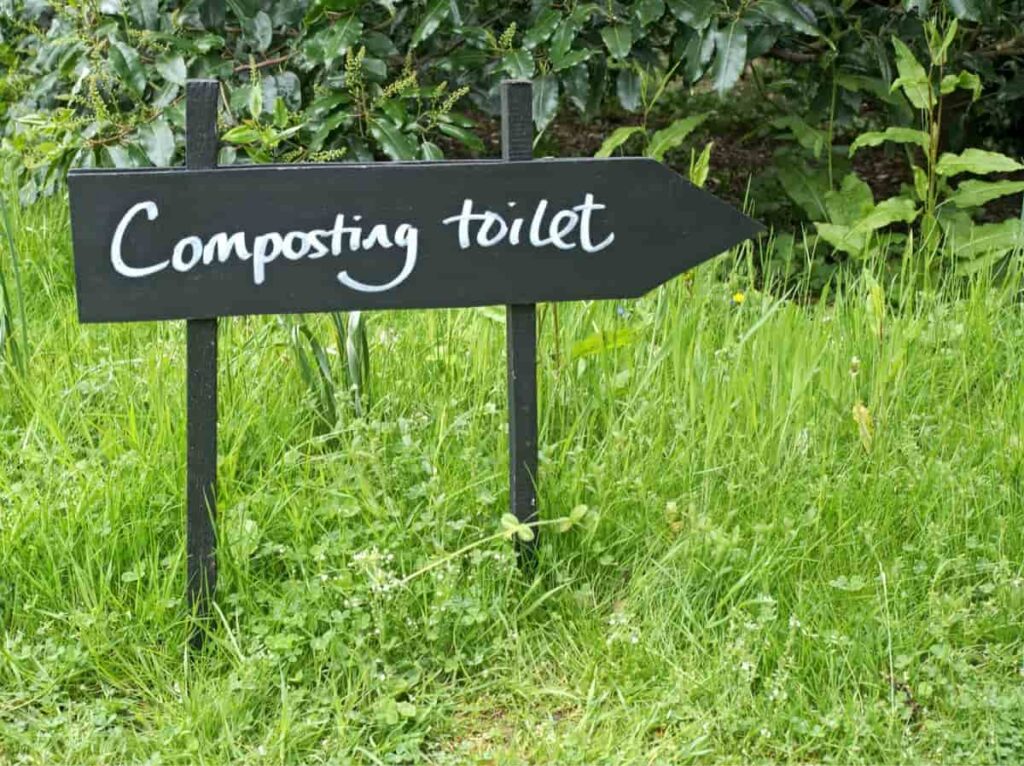
The shells need to be soaked in the water overnight, and then the water needs to be strained. Pushing the concentrated calcium and potassium fertilizer directly onto the soil is best to boost plants. It would be best if you did this at least once a week, but the frequency at which you do this will depend on how often your family eats eggs and how often you have eggshells.
Benefits of Eggshell fertilizer
Essential plant nutrients in eggshells
Adding organic matter to your garden soil or potting soil will give your vegetables a better nutritional boost and your potted plants. In chemical fertilizers, NPK is generally referred to as one of the three major macronutrients. It is believed that eggshells contain some of these nutrients as well. The most important element is nitrogen. It is because nitrogen promotes plant growth and fruit or flower production.
Besides enhancing a plant’s root structure and making it more resilient to illnesses and pests, potassium enhances its ability to store and absorb energy, whereas phosphorus improves its ability to store and absorb water. Whatever kind of fertilizer you choose, whether homemade or store-bought, it’s important to understand which nutrients it offers and when to use it. In addition to calcium and magnesium, eggshells are packed with small amounts of nitrogen, which plants likes.
Pest control benefits for outdoor and indoor plants
It is well known that eggshells can be used as a border control method to keep pests away from your ornamental or food plants. It is possible to use eggshells as a deterrent, thanks to their sharp edges, but only after they have been thoroughly washed and dried before use. Soft-bodied pests such as slugs and snails cannot move over the sharp shell shards, so they tend to avoid your plants; as a result, making them one of the best slug repellents.
It is important to remove the inner membrane of an egg when peeling it, then rinse it well. Break down your eggshell as much as you can. This process does not aim to produce powdered eggshells but rather to create tiny sharp shards. If you want to use crushed eggshells for tomatoes or any other plant type, you will need to make a ring of eggshell pieces around them to protect them from incoming predators. The shells of eggs lose their protective properties more quickly when it rains since rain softens the shell fragments and makes them less durable.
Improve soil quality with eggshells
Besides providing nutrients, crushed eggshells improve the drainage of the soil and its aeration of it. It makes potting soil a good seed starter. In addition to that, eggshells also reduce the acidity of the soil. Plants need to absorb nutrients from the soil and stay away from toxic substances such as aluminum. Due to the calcium carbonate in eggshells, soil pH levels are lowered, making the soil more alkaline rather than acidic.
In case you missed it: How to Grow Desert Roses: Varieties, Soil, Planting, Pruning, Fertilizers, and Care
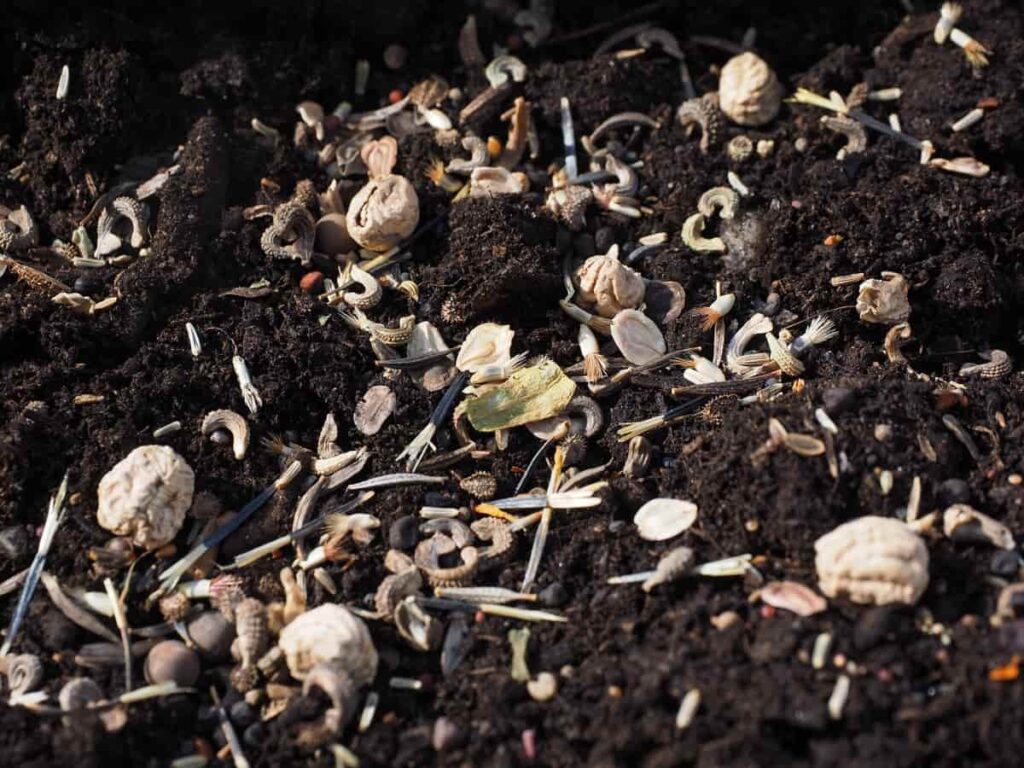
Once crushed, eggshells are a good source of calcium as they disintegrate and provide moderately acidic soil with an additional source of calcium. A layer of eggshells can also be used as mulch to enhance the garden’s appearance. Crushed eggshells on top of the soil will help to protect the soil from evaporation and also provide nutrients to the soil as the shells degrade. Ideally, it is best to cover the ground with a two-inch layer of mulch, which will require many eggshells.
Eggshells encourage root growth and discourage blossom-end rot
The calcium carbonate in eggshells increases the strength of a plant’s roots, allowing it to grow faster and become more robust. The powdered eggshells are added to boiling water, and then the mixture is covered and stored for one week, stirring the mixture only once a day, after which it is uncovered to stir the mixture.
The mixture needs to be poured directly over the plant’s roots after seven days so that the roots can absorb the fertilizer. It has been found that adding calcium to fruiting plants can work wonders in avoiding blossom-end rot caused by calcium deficiency.
Eggshells in the compost pile for fertilizer
Compost’s many nutrients, including nitrogen, phosphorous, and potassium, make it an excellent natural fertilizer. It is common for many people to use compost as a soil supplement or fertilizer regularly. You can increase your compost pile’s nutrient density by adding eggshells, providing your final product with more calcium and magnesium. If you are cleaning up outside, it is the perfect time fill a compost bin with yard trash so you can start composting.
It is possible that leaf litter, grass clippings, etc., can be mixed with food scraps such as eggshells, vegetable and fruit wastes, coffee grounds, and leftover food. In addition to reducing food waste, composting increases the size of your vegetables and fruits. Add eggshells to your compost pile for a stronger pepper plant to provide calcium and magnesium. For roses and various other plants in your yard, eggshells can be used in various ways.
Safe, cheap, and easy to make
You should not worry if your dog or pet eats the eggshells from your garden; they are okay to do so. As a calcium supplement for pets, eggshells are often used, though they must first be sterilized if they are to be used. Put your shells into the oven and bake them at high temperatures for 30 minutes to sterilize them. As a result of the prolonged heat, any salmonella present is killed. It is easy and inexpensive to make your plant fertilizer using eggshells, and it allows you to ensure that the compounds you introduce to your garden are what you want.
Eggshell fertilizers help boost your garden plants and, at the same time, help you reduce hazardous chemicals to keep the garden organic. It would be best if you took care of the nutritional requirements of your plants to ensure that they remain healthy and produce more flowers, fruit, or vegetables.
Does eggshell fertilizer work for all plants
Many plants will benefit from using eggshell fertilizers, but not all of them. It has been demonstrated that eggshell fertilizer will benefit fruit-bearing species and vegetables, including apples, strawberries, lettuce, cucumbers, and eggplants. In addition to that, it will also improve certain types of flowers (perennials and annuals), such as roses and chrysanthemums.
The eggshell fertilizer can be used for succulents but lacks the nitrogen that some succulents might need to thrive. Conversely, it should be noted that the extra calcium in eggshell fertilizer will harm certain indoor and outdoor plants. It can affect geraniums, violets, azaleas, and other plants that thrive on acidic soil. Using eggshell fertilizer on cabbage, beans, and spinach should be avoided.
In case you missed it: How to Make Rose Plants Bushy and Flowers Bigger: Propagation, Fertilizers, Pruning, Planting, and Care
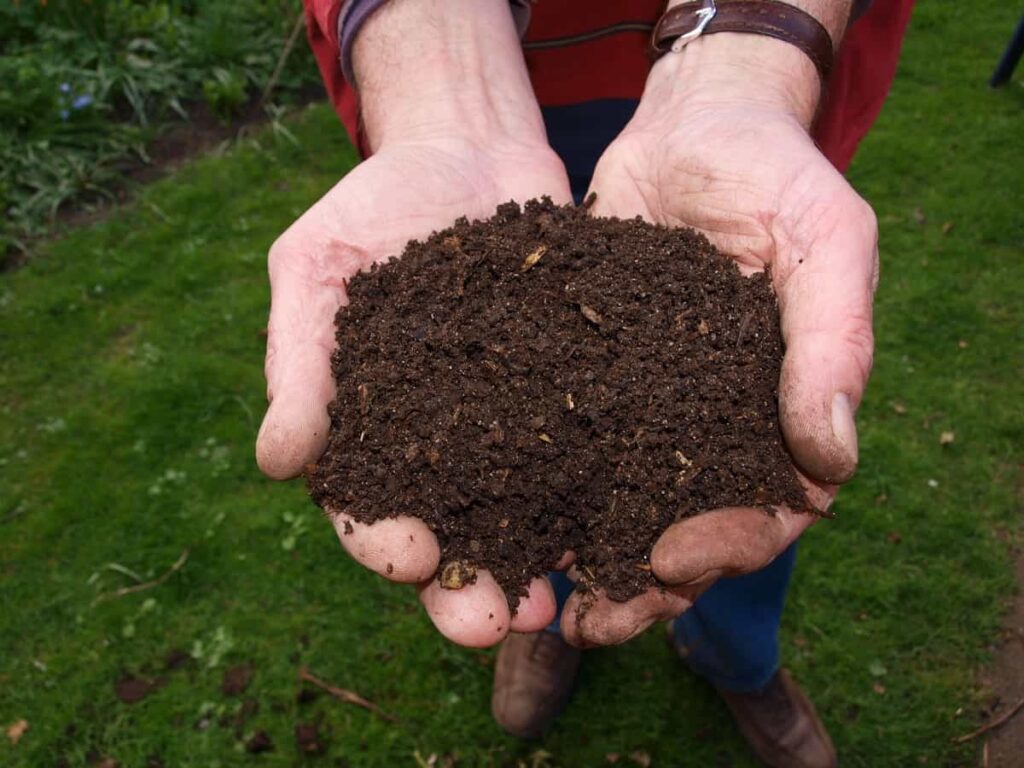
When to apply eggshell fertilizer
- A potted established houseplant can be fertilized by mixing a few pinches up to a couple of tablespoons of eggshell powder into the soil and watering thoroughly.
- It is possible to make calcium water by steeping dried eggshells in water for a few days, straining the strained water, and using it for your plants, including your houseplants, as needed. Often, plants that haven’t been repotted for some time will perk up quickly when given a good drench of eggshell water after long periods of unused soil.
- It is also possible to scatter crumbled shells in the soil before planting seeds or plants before you place them in the ground. It is expected that the minerals in the eggshell fertilizer, mostly calcium carbonate but also small amounts of potassium and phosphorus, will gradually break down, allowing the plants’ roots to absorb them.
Conclusion
Use eggshells to make an excellent fertilizer for your garden instead of throwing them away since they are good sources of calcium for your plants. It is easy to add minerals and nutrients to the soil by crushing eggshells or making eggshell tea.
- Management Pests and Diseases in Your Cotton Field
- Sheep Farming Business Plan for Beginners
- Aquaponic Farming at Home: A Step-By-Step Guide
- Profitable Village Farming Business Ideas in 2024
- High-Yield Aquaculture: Fast-Growing Fish for Farming
- Effective Fish Pond Construction Techniques for Beginners
- Irrigation and Water Management in Pineapple Farming
- Blossom to Harvest: Mastering Flowering and Pollination in Papaya Farming
- Pig Fattening Essentials: From Selection to Sale for Beginners
- Raising Wagyu Cattle: A Complete Guide for Premium Beef Production
- Soil Types and Their Water Holding Capacity
- Optimizing Irrigation Schedules for Coconut Groves for Enhanced Yield
- Espresso Your Garden: Coffee Grounds for Healthier Acid-Loving Plants
- The Best Soil Mix for Snake Plants: How to Mix Your Own Snake Plant Soil
- Green Thumb Success: Expert Tips for Cultivating Greenhouse Beans All Year Round
- Bloom All Year Round: The Ultimate Guide to Indoor Hyacinth Care
- Eco-Friendly Gardening: How to Make Liquid Fertilizer from Kitchen Waste
- Ultimate Guide to Grow Anise in Pots: Explore Seed Propagation to Harvesting
- Guide to Raising Chester White Pigs: Discover Breed Facts to Growth Management
- Mastering the Elegance: The Ultimate Guide to Weeping Cherry Tree Care, Planting, and Maintenance
- Ultimate Guide to Planting Garlic in Grow Bags: Growing Strategies for Beginners
- How to Fix Spider Plant Leaf-Related Problems: Natural and Organic Remedies
- 10 Reasons Why Your Tulsi Plant is Shedding Leaves: Home Remedies and Solutions
- Optimizing Growth and Yield: The Advantages of Palm Bunch Ash Fertilizer
- Utilizing Neem Oil Extract as a Natural Pesticide for Hydrangea
- From Soil to Harvest: Various Ways in Which Farmers Can Use AI Tools
- Steps to Encourage and Induce Citrus Flowers: A Comprehensive Guide
- How to Fix Snake Plant Leaf-Related Issues: Natural and Organic Remedies
- Transform Your Garden into a Fragrant Oasis with Raat Ki Rani (Night Blooming Jasmine)
- Discover the Ideal Chicken Breeds for Philippine Farms
- How to Create a Poultry Egg Farm Business Plan for Profits
- Grow Lemon Cucumbers Like a Pro: Insider Techniques for Bountiful Yields
- Ultimate Guide to Caring for Your Pink Princess Philodendron: Tips for Thriving Variegation
- Areca Nut Profit Per Acre: Calculating Yield and Cost of Cultivation
- How Kaveri Chicken is Becoming a More Profitable Breed in Indian Backyards
- Transform Your Barn: 9 Steps to Convert a Horse Stall into a Chicken Coop

